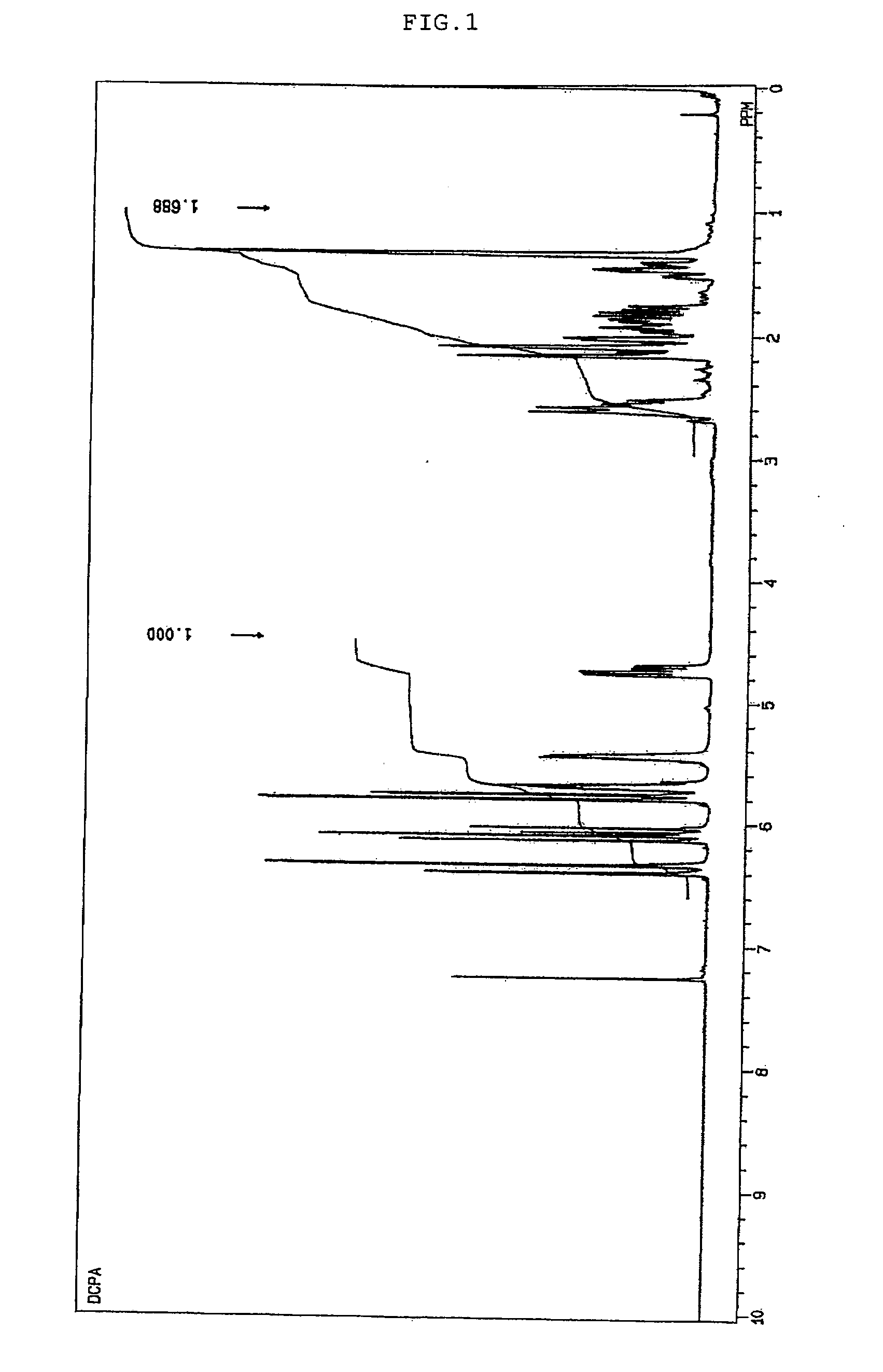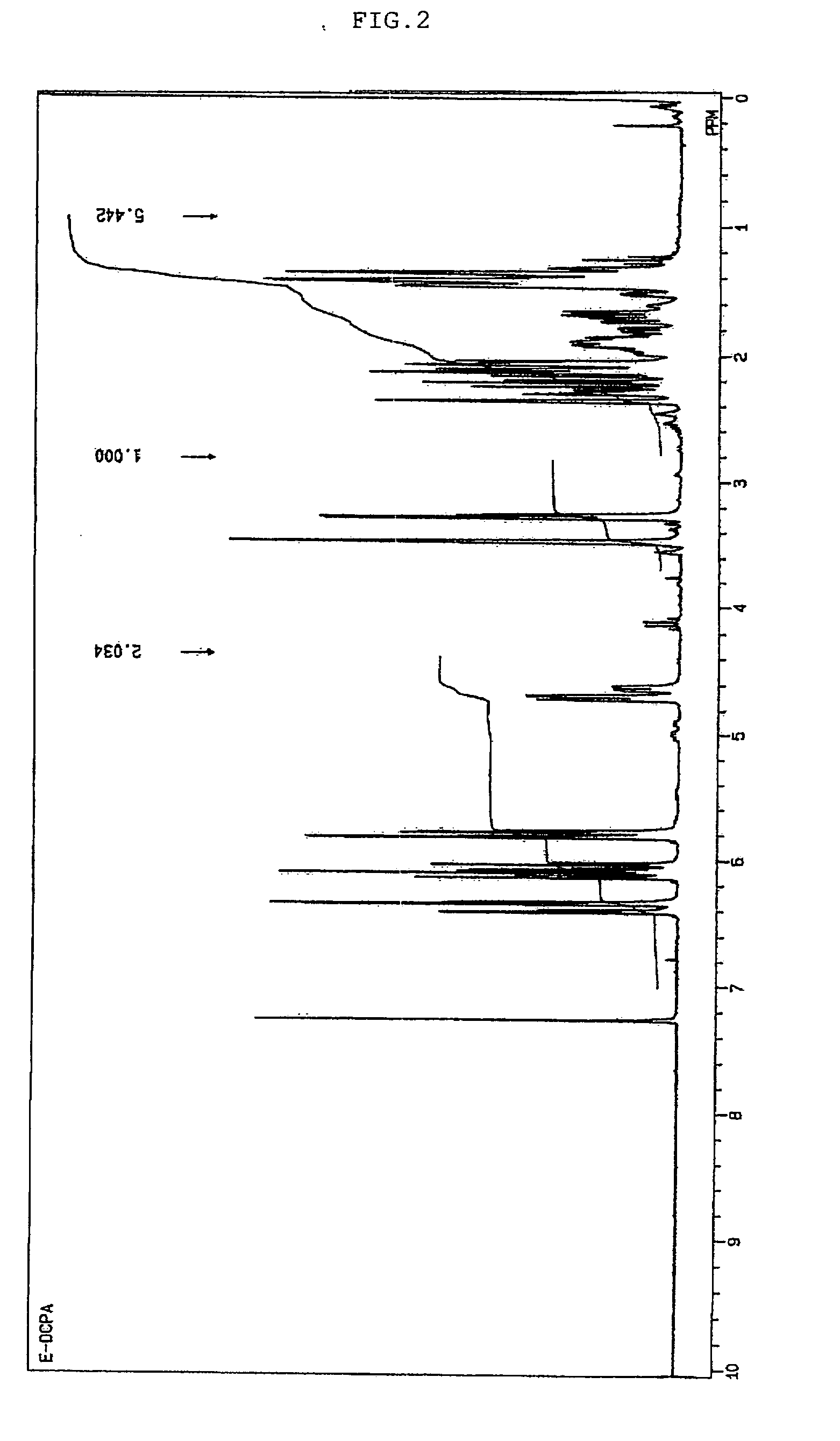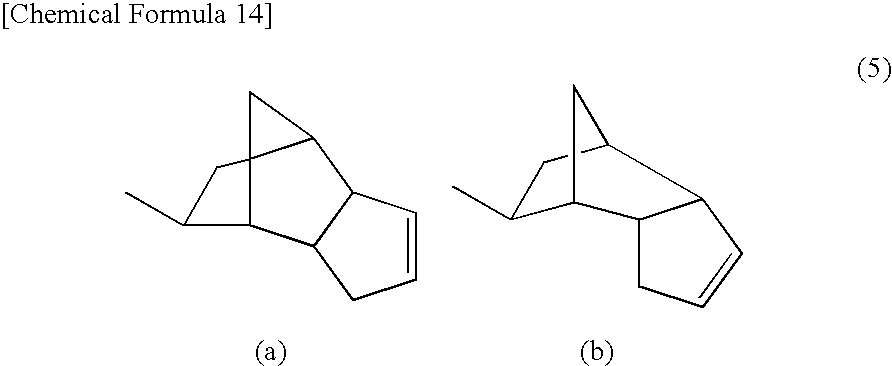Cycloaliphatic epoxy (meth)acrylates, preparation processes thereof, and copolymers
a technology of cycloaliphatic epoxy and epoxy, which is applied in the preparation of organic chemistry, sulfonic acid amides, etc., can solve the problems of poor storage stability, insufficient storage stability of compounds, and poor stability of compounds, and achieve excellent storage stability, high soluble in solvents, and suppressed reactivity
- Summary
- Abstract
- Description
- Claims
- Application Information
AI Technical Summary
Problems solved by technology
Method used
Image
Examples
example 1
[0089]In a jacketed 1-liter flask were placed 100 g of tricyclo[5.2.1.02,6]dec-3-enyl acrylate (a product of Hitachi Chemical Co., Ltd. under the trade name of “FA-511A”, having a molecular weight of 204.3) and 100 g of ethyl acetate. The temperature within the reaction system was adjusted to 50° C. while blowing air thereinto, and 156 g of a solution of peracetic acid in ethyl acetate having a peracetic acid concentration of 29.6% and a moisture content of 0.2% was added dropwise over about one hour. After the completion of dropwise addition of peracetic acid, the mixture was aged at 50° C. for four hours, and the reaction was completed. The crude reaction mixture was washed with water at 50° C., from which low-boiling components were removed at 70° C. / 10 mmHg, to thereby yield 91.8 g of 3,4-epoxytricyclo[5.2.1.02,6]decyl acrylate. This had an oxirane-oxygen concentration of 6.74% and a viscosity of 61 cP at 25° C. This was subjected to 1H-NMR measurement to find that a peak derive...
example 2
[0090]In a jacketed 1-liter flask were placed 100 g of tricyclo[5.2.1.02,6]dec-3-enyl acrylate (a product of Hitachi Chemical Co., Ltd. under the trade name of “FA-511A”, having a molecular weight of 204.3), 100 g of toluene, 0.24 g of phosphoric acid, 4.65 g of trimethyloctylammonium chloride, and 6.60 g of sodium tungstate. The temperature within the reaction system was adjusted to 30° C. while blowing air thereinto, and 83.5 g of 30% hydrogen peroxide was added dropwise over about one hour. After the completion of dropwise addition of hydrogen peroxide, the mixture was aged at 40° C. for two hours, and the reaction was completed. The crude reaction mixture was washed with water at 40° C., from which low-boiling components were removed at 70° C. / 10 mmHg, to thereby yield 91.6 g of 3,4-epoxytricyclo[5.2.1.02,6]decyl acrylate. This had an oxirane-oxygen concentration of 6.62% and a viscosity of 103 cP at 25° C. This was subjected to 1H-NMR measurement to find that a peak derived fro...
example 3
[0091]In a jacketed 1-liter flask were placed 100 g of 2-(tricyclo[5.2.1.02,6]dec-3-enyl)oxyethyl methacrylate (a product of Hitachi Chemical Co., Ltd. under the trade name of “FA-512MT”, having a molecular weight of 262) and 20 g of ethyl acetate. The temperature within the reaction system was adjusted to 50° C. while blowing air thereinto, and 106.4 g of a solution of peracetic acid in ethyl acetate having a peracetic acid concentration of 29.6% and a moisture content of 0.2% was added dropwise over about one hour. After the completion of dropwise addition of peracetic acid, the mixture was aged at 50° C. for four hours, and the reaction was completed. The crude reaction mixture was washed with water at 50° C., from which low-boiling components were removed at 70° C. / 10 mmHg, to thereby yield 96.0 g of 2-(3,4-epoxytricyclo[5.2.1.02,6]decyloxy)ethyl methacrylate. This had an oxirane-oxygen concentration of 5.20% and a viscosity of 144 cP at 25° C. This was subjected to 1H-NMR measu...
PUM
| Property | Measurement | Unit |
|---|---|---|
| temperatures | aaaaa | aaaaa |
| wavelengths | aaaaa | aaaaa |
| temperature | aaaaa | aaaaa |
Abstract
Description
Claims
Application Information
 Login to View More
Login to View More - R&D
- Intellectual Property
- Life Sciences
- Materials
- Tech Scout
- Unparalleled Data Quality
- Higher Quality Content
- 60% Fewer Hallucinations
Browse by: Latest US Patents, China's latest patents, Technical Efficacy Thesaurus, Application Domain, Technology Topic, Popular Technical Reports.
© 2025 PatSnap. All rights reserved.Legal|Privacy policy|Modern Slavery Act Transparency Statement|Sitemap|About US| Contact US: help@patsnap.com



